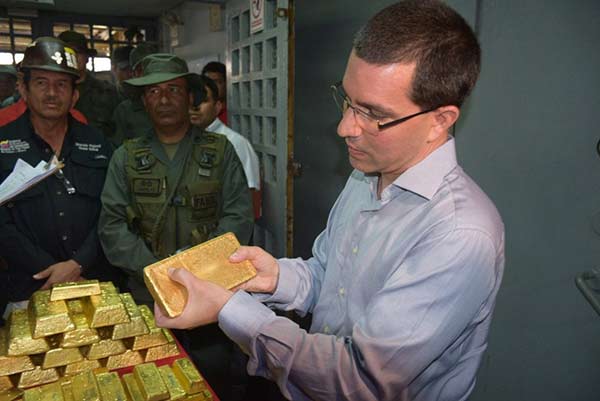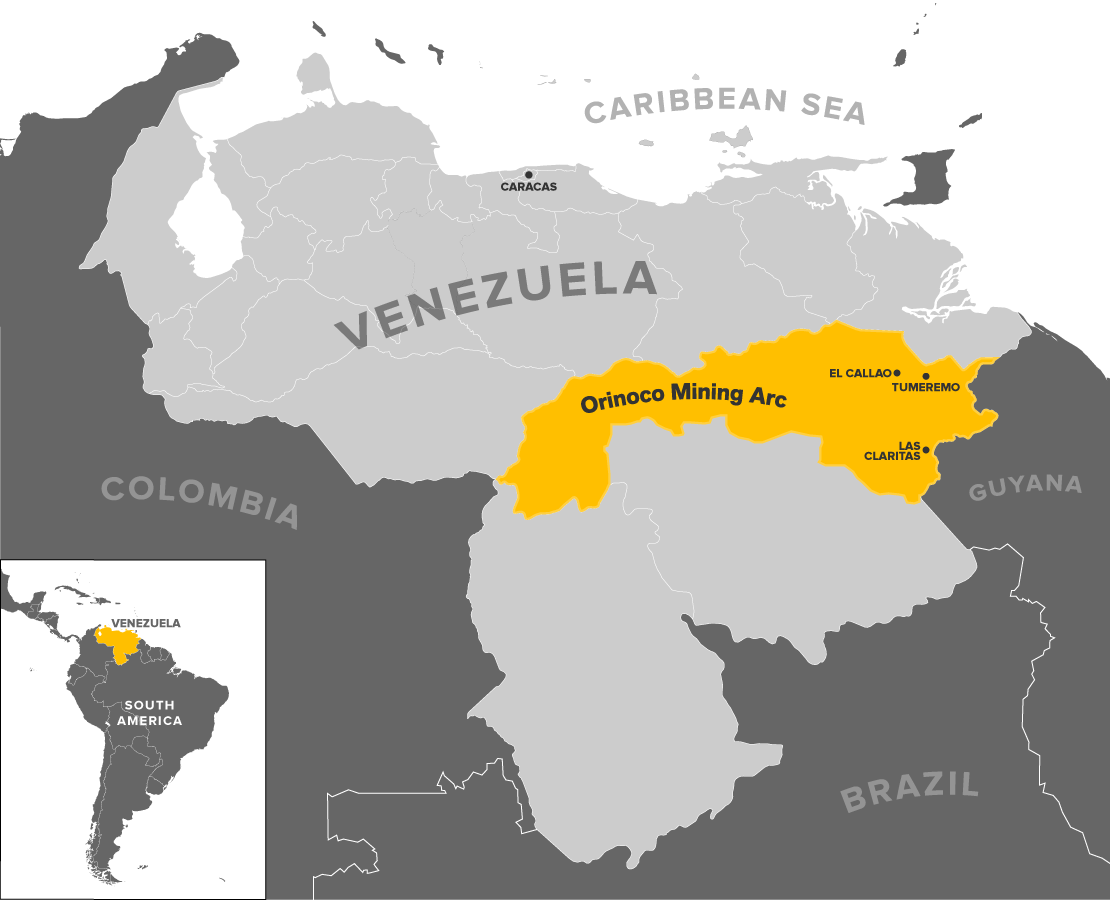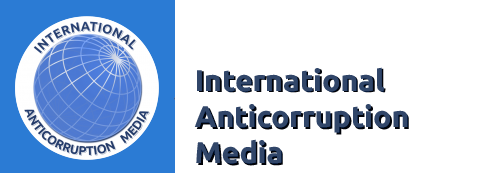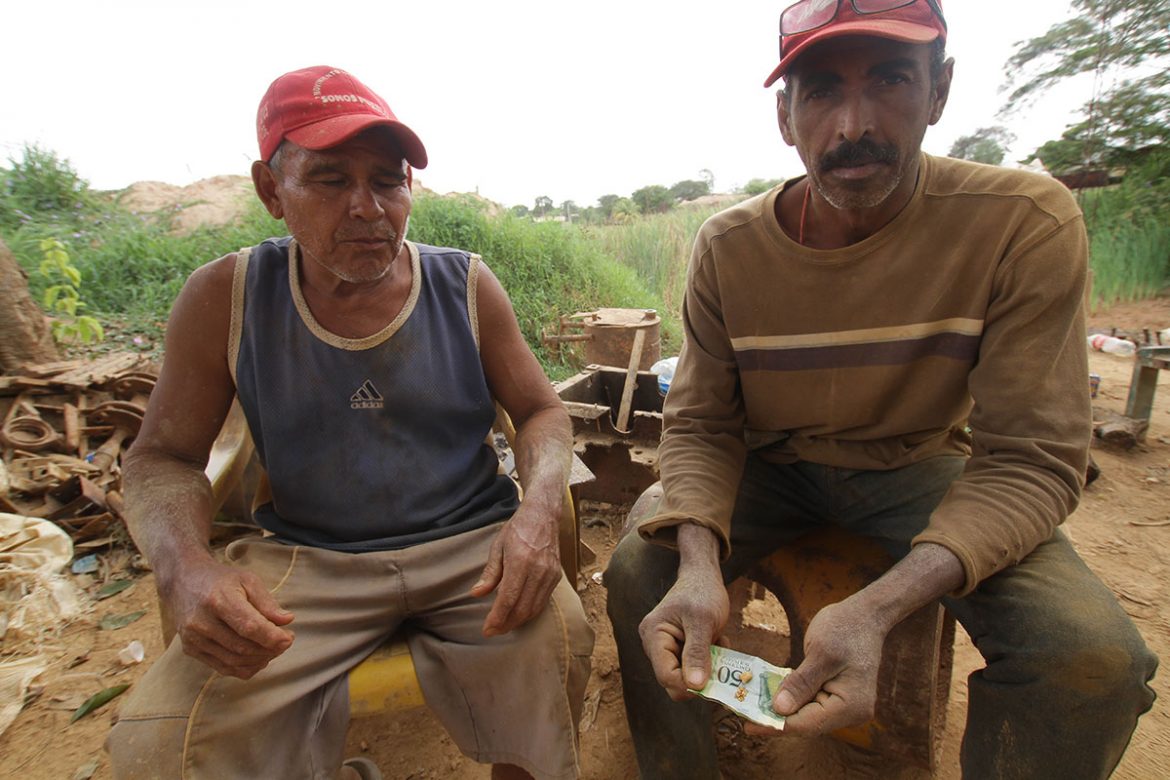This material belongs to: OCCRP.
A joint investigation by Efecto Cocuyo and OCCRP explores the Orinoco Mining Arc — the Venezuelan government’s controversial attempt to find new sources of wealth — and the devastating effects of the mining on the people who live there.
Once Latin America’s richest country, Venezuela is now known around the world for political conflict and economic failure.
During the tenure of President Nicolás Maduro, the nation’s oil income has plummeted. The oil-driven economy followed suit, with GDP per capita falling by almost a third since 2013.
Now, even as security forces battle protesters in the streets, ordinary people must queue to buy food. Hyperinflation has made the currency nearly worthless. Even basic medicines are in short supply.
Early last year, in an attempt to prop up the failing economy, President Maduro resurrected an old mining project first proposed by his predecessor, the late Hugo Chávez. On Feb. 24, 2016, Maduro signed a decree declaring a “National Strategic Development Zone” in Venezuela’s Guiana Highlands.
The project — called the “Orinoco Mining Arc” — aims to exploit the region’s largely untapped mineral wealth. In a territory south of the Orinoco river spanning nearly 112,000 square kilometers (larger than Bulgaria or Cuba) lie some of the country’s greatest mineral treasures: gold, diamonds, and coltan, a metallic ore crucial to the electronic and arms industries.
Maduro’s rhetoric was grand. “We have a clear national project which integrates all the wishes of the country,” a local television channel reported. “We are building the right to the future for a powerful Venezuela.”
But the challenges of mining this enormous area aren’t just logistical. The Orinoco Mining Arc is part of the Amazon River basin, an ecosystem of global interest for its immense biodiversity and for the 16 officially recognized indigenous peoples that have made it their home since ancient times.
The government made all the right promises, pledging to tap the wealth while respecting the environment, adjusting for socio-cultural impact, reinvesting revenues into benefits for the most vulnerable, and tackling the threat of organized crime.
Now, a year and a half after the Orinoco Mineral Arc was established, OCCRP reporters have visited the area to see what is going on for themselves.
What they found are unfulfilled promises.
The prospect of finding sufficient resources to offset the fall of oil prices remains elusive.
Despite assurances that unsafe practices would be banned, artisanal miners are still using deadly mercury to refine gold.
Moreover, the arrival of large-scale mining has fueled merciless disputes over the precious metals. It is a struggle dominated by mafia clans, government greed, a foreign company with its own mysterious agenda — and, ultimately, a lack of government control.
Maduro promised wealth and prosperity. What the people got instead was death, illness, gang rule, destruction to indigenous people, and environmental catastrophe.
Socialist Mining Brigades Face Crime and Falling Output
In 2011, as then-President Hugo Chavez nationalized the gold mining industry, the leftist leader claimed he had a new idea that would make life better for all Venezuelans. He described a new “mining arc” south of the Orinoco River, in the northern Amazon, that could be exploited for vast minerals.
“There is a huge potential for economic power,” Chavez said.
While Chavez died before he was able to enact his plan, in February 2016 his successor Nicolas Maduro started implementing the Orinoco Mining Arc. That November, Maduro promoted a new model of extracting minerals that would revive the country’s stagnant mining industry – an “army” of miners called the Socialist Mining Brigades.
The brigades were intended to replace the illegal mining that had flourished in the region. They would sell the gold they extracted to Minerven, the state mining company, which would keep 3 percent of its value for itself. The gold, Maduro said, would then go to the national bank to “strengthen the reserves,” while half of the proceeds would go to health, education, and other social spending. And the miners would no longer use mercury – he had banned the use of the dangerous chemical in any mining operations in an August decree. The system was finally begun in January 2017.
The president had promised that Venezuelan mining would become cleaner, safer, and more productive – but that’s not how it has worked out.
The brigades continue to use mercury as they have in the past. Many sell their gold not to the government as the plan envisioned, but to the highest bidder. And meanwhile, the miners face the continuing problem of organized crime groups demanding a cut of their earnings and fixing the price of gold in the region. (See: Gang Lords Rule the Orinoco Mining Arc)
A Dying Industry?
Gold production in Venezuela has been plummeting for a long time.
In 2011, when the industry was first nationalized, the official annual gold output of the country’s mines was nearly 4,700 kilograms. It fell steeply in the following years. By 2015, the Venezuelan Mining Corporation said it produced just 430 kilograms – 28 percent of the planned total and a 91 percent drop from the first year of nationalization. The Energy and Oil Ministry reported a different figure of 558 kilograms for 2015 – 47 percent lower than in 2014.
In the 2015 annual report of the Ministry of Oil and Mining, the Venezuelan Mining Corporation provided various reasons for missing its goals: lack of transportation for the staff, protests over drinking water supplies, power failures, and supply shortages.
The official output has only continued to drop since, while an unknown amount of gold has been mined and sold illegally.
Successive ministers claim turn-around

State ministers insist the new mining brigades are working. During Roberto Mirabal’s short tenure as Environmental Mining Development minister (he was replaced in February 2017, just seven months after his appointment), he claimed that 400 kilograms were mined in six months in 2016, a rate of gold output double that of 2015.
This year, now that the Socialist Mining Brigades are at work, the claims regarding gold extraction in the Orinoco Mining Arc have kept on climbing:
- On May 4, Mirabal’s successor Jorge Arreaza reported that 313 kilograms of gold were sent to the Central Bank.
- On May 18, he reported another 453 kilograms.
- On June 29, he announced another 250 kilogram shipment on Twitter.
The figures provided by Arreaza, amount to over 1,000 kilograms of gold transferred to the Central Bank’s vaults in just under two months. His tally does not even include the 400 kilograms claimed by his predecessor. And in September, Victor Cano – who replaced Arreaza one month before, announced additional gold amounts that brought the total claimed gold production in the Orinoco Mining Arc to nearly 4,000 kilograms over the last 15 months.
But the official figures from the Central Bank radically contradict the minister’s claims. In 2016, the bank said it bought 620 kilograms of gold. The most recent report from the Central Bank shows that only 30 kilograms were bought over the first four months of 2017.
The Environmental Mining Development Ministry emphasized that the tons of gold that were allegedly produced by organized small-scale miners used clean technologies:
“This delivery of gold … was accomplished thanks to the commitment made by the traditional workers of El Callao and the [Ministry] to work together to boost gold exploration, exploitation, and commercialization of gold, in compliance with the laws established by the national government, where the conservation of the environment plays a crucial role.”
But miners say that this is not true. (Story coming soon: Miners Say They’re Still Using Poison)
New brigades, old gangs
Most of the production attributed to the Socialist Mining Brigades relies on artisanal miners working in the Orinoco Mining Arc. While the workers use crude tools and dangerous chemicals, that’s not their only problem.
Vladimir Vegas, a miner in La Ramona, a small town just northwest of the mining center of El Callao, told reporters he is afraid because the new Brigades are under threat from the gold gangs that infest the area. (See: Gang Lords Rule the Orinoco Mining Arc)
“All we want is for the government to help us, to protect us from criminal gangs. One of our partners was killed five months ago,” he says. “They killed him because he stood up and denounced tribute payments and gold trafficking.”
It’s not just the gangs – the state is implicated too.
“It’s no secret that the government’s got its hands in there,” says Alexis Chaurán, spokesman for La Ramona’s Revolutionary Miners and Millers Association. “Generals, heads of all public institutions and, mainly, the Bolívar state police, the most corrupt of all. Everything’s business. We’re victims of the so-called syndicates, which are nothing more than armed gangs.”
Chaurán confirms that the artisanal miners participated in the gold collection mentioned by ministers Mirabal and Arreaza, even before the formal creation of the Socialist Mining Brigades was published in the Official Gazette of Jan. 9, 2017.
“Yes, we worked with the government. We received the gold produced by some miners in the sector and last year, we sold gold to the Central Bank” twice, he says, noting the gold was produced like it’s always been – with mercury.
Large-scale vs. small-scale miners

There are no reliable figures on how many people are engaged in small-scale mining and even fewer on how much illegal mining goes on in the area. The government news agency reported in 2016 that the number of small-scale miners could be as high as 40,000.
The chaos of gold extraction in Venezuela was examined in a report released by the Global Initiative against Transnational Organized Crime in April 2016. The document claims that 18 tons of gold were produced in Venezuela in 2013, 16 of which were extracted and sold illegally. This discrepancy with the government’s much lower figures suggests that a large percentage of the country’s mining industry has moved into the shadows – and may account for the dropping official statistics.
Ramón Calderón, a representative of La Ramona’s miners and millers, thinks that the Venezuelan government “has done justice” in its attempt to empower those who have worked in gold extraction at their own risk. But he has reservations concerning the involvement of foreign capital in the Orinoco Mining Arc.
“What we want is to show the state that we can manage our own companies, that there’s no need for foreign investors here. We’ve had terrible experiences with transnational companies before,” says Calderón. La Ramona’s millers justify their resistance with political arguments, questioning the wisdom of Chavez’s policies and indicating that the government’s plans to involve large foreign companies in the mining industry will spur resistance.
“In 2010, we were barred from accessing the mines, particularly those located in Increíble, where we had 60 gullies,” says Chaurán. “The struggle of La Ramona’s miners [forced Chávez to] decree the nationalization of gold and expel foreign companies from the country. They’d been messing with the environment for many years and left us with huge holes in the ground, a horrible deforestation and growing poverty.”
Gang Lords Rule the Orinoco Mining Arc
The rise of organized crime in Venezuela’s Southern Bolívar region has been directly proportional to the state’s neglect of local people and towns. Criminal gang lords impose terror using the same methods of extreme violence favored by the leaders of Venezuelan prisons, the pranes, turning the mining business into part of their criminal network.
The teeth of Humberto Martes are capped with gold. Seven thick gold chains hang around his neck. Each bears a medal — six with his initials and one showing a relief of Christ’s face. There’s a gold watch on his left wrist and a heavy gold bracelet on his right.
Similar jewelry festoons an 11-month-old toddler, the youngest of his 25 children (according to his cousin Yolmaira and his mother Francisca).

Martes is about 50, tan, gray-haired and wide-bellied. Just 5’3” tall, he carries a gun strapped to his waist. And here in the gold mining town of Las Claritas, deep in Venezuela’s Orinoco Mining Arc, he’s an important man.
All kinds of people queue outside Martes’ house and ask for his help. In fact, the place is known as “Humberto’s office.”
An old man leaning on a stick wants help for a relative with a fractured hip. Isabel García asks permission to install a power outlet for her sewing machine. Edmundo Bautista travelled 400 miles to ask for a job. By noon, he’s been hired to help build a house. Two youths request Martes’ intervention because, they say, a group of drunks destroyed a motorcycle and fled. They hope he can solve the problem “by hook or by crook.”
Martes is proud of his role in the community, seeing himself as a benefactor. “I treat everyone well and I help them when I can,” he says. For example, he makes fish soup every Thursday and offers it to his visitors.
But he has other duties as well, which point to a darker role. Among other things, Martes is charged with collecting dues in gold (gramas, the miners call them) that each gold buyer must pay in exchange for protection if he wants to stay in business. Other vendors and shop owners in Las Claritas must pay in cash.
“Everyone’s got to contribute here so we can keep order. I never rest, as you can see,” Martes says, adding that he starts watching and collecting at 5 a.m. each day. When he leaves his residence, it’s aboard a Toyota Fortuner. He also has a Toyota 4Runner and a king-cab Toyota Hilux. Few in Las Claritas can boast such luxuries.
When he gets home from his rounds, Humberto pulls small packets of gold from his pockets and transfers them to a transparent plastic bag, in full view of everyone, including the Bolívar state policemen who sometimes drive by his “office” but seldom bother to look.
Everything’s recorded by his own security cameras.

Martes is a senior leader in the local pranato — a criminal mob that holds an iron grip over ten million ounces of gold and a billion and a half pounds of copper — the estimated amount contained in just part of the Las Brisas-Las Cristinas mines, the largest in Venezuela.


